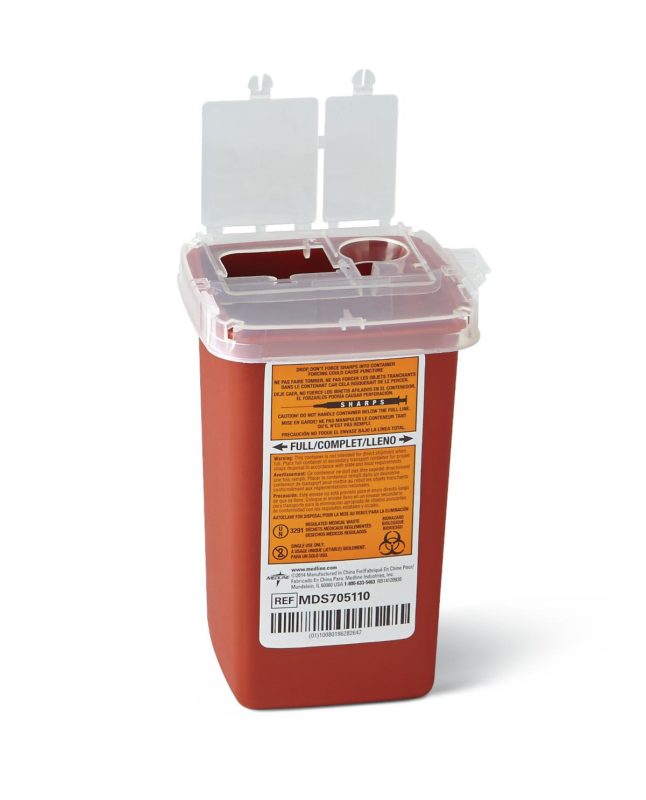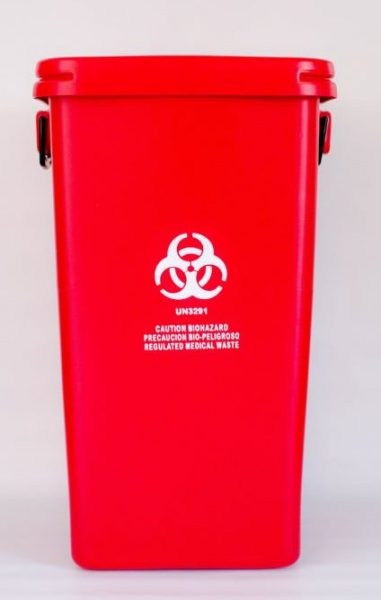Community Care: Seamless and Reliable Medical Waste Removal Near Me
Stay Ahead of Laws: Specialist Suggestions on Medical Waste Disposal
In a globe where the medical care industry is regularly advancing, it is vital for clinical facilities to stay in advance of laws when it comes to the appropriate disposal of clinical waste. With rigorous standards and frequent regulative adjustments, it can be testing to browse the intricacies of this process. Nevertheless, with skilled recommendations, facilities can make sure conformity and mitigate risks associated with improper waste disposal. From comprehending the different classifications of clinical waste to implementing the appropriate collection and segregation methods, this conversation will certainly give beneficial insights and workable suggestions to aid facilities stay ahead of laws in the ever-changing landscape of clinical garbage disposal.
Recognizing Medical Waste Categories
Understanding clinical waste classifications is essential for appropriate disposal and monitoring in medical care centers. Medical waste refers to any type of waste produced by health care activities that might present a hazard to public health and wellness or the setting. It is vital to classify clinical waste properly to ensure its safe handling, treatment, disposal, and transport.
There are several groups of medical waste that healthcare centers require to be acquainted with. One of the most usual classifications include contagious waste, pathological waste, sharps waste, pharmaceutical waste, and chemical waste. Each group has specific guidelines and policies for its appropriate administration and disposal.
Transmittable waste consists of materials contaminated with blood or various other bodily liquids, such as gloves, dress, and laboratory cultures. Pathological waste describes human cells, body organs, or body parts that call for special handling and disposal. Sharps waste consists of used needles, syringes, and other sharp items that can cause injury and send infections. Drug waste comprises expired, extra, or contaminated medicines that require mindful handling and disposal. Finally, chemical waste includes solvents, disinfectants, and other chemical compounds used in healthcare centers.
Remaining Up-To-Date With Regulatory Modifications
Staying current with regulatory adjustments is critical for health care facilities to ensure conformity and appropriate monitoring of medical garbage disposal. medical waste removal near me. With laws constantly advancing, it is essential for health care facilities to remain updated to stay clear of charges, penalties, and prospective damage to the atmosphere and public health
To remain ahead of regulatory adjustments, medical care facilities must develop a system for monitoring and tracking updates. This can be done by signing up for regulatory newsletters, going to conferences and workshops, and actively taking part in sector organizations. Additionally, facilities must designate a team member or group in charge of remaining notified and distributing details to relevant stakeholders.
Normal communication with governing agencies is also essential. Health care facilities ought to establish relationships with neighborhood, state, and government agencies to guarantee they know any kind of changes in regulations that might influence their waste administration practices. This can be done through regular conferences, involvement in public remark periods, and proactive interaction with regulatory companies.
Moreover, healthcare facilities should take into consideration partnering with waste monitoring business that specialize in clinical garbage disposal (medical waste disposal services with WasteX). These firms are often well-versed in the most recent laws and can offer advice and assistance to make sure conformity
Executing Appropriate Collection and Partition Methods
To properly take care of medical waste disposal, health care centers should develop correct collection and segregation approaches in conformity with regulatory standards. Executing these approaches makes certain the risk-free handling and disposal of possibly harmful materials, secures the environment, and minimizes the threat of injuries and infections to healthcare workers and the basic public.
Proper collection and segregation techniques include making use of assigned containers and labeling systems. Health care facilities need to supply plainly classified containers for different kinds of medical waste, such as sharps, transmittable waste, pharmaceutical waste, and non-hazardous waste. These containers ought to be color-coded and plainly significant to stay clear of complication and promote simple recognition.
In addition, medical care facilities ought to train their team on the appropriate treatments for accumulating and segregating other clinical waste. This includes informing them on the different sorts of waste, the appropriate containers to make use of, and the importance of adhering to guidelines and laws. Regular training sessions and correspondence course must be carried out to make certain that personnel participants continue to be updated on ideal methods.
Moreover, health care facilities ought to develop a system for regular collection and disposal of clinical waste. This may involve partnering with licensed waste monitoring firms that specialize in medical garbage disposal. These firms will guarantee that the accumulated waste is carried and taken care of in conformity with regulatory requirements.
Picking the Right Disposal Techniques

Incineration is just one of one of the most usual and effective methods for disposing of specific kinds of clinical waste, such as pathological waste and sharps. It involves the controlled burning of waste at heats, decreasing it to ash. Nevertheless, incineration can release dangerous toxins right into the air and add to air contamination.

Chemical treatment involves the use of chemicals to neutralize the waste and decontaminate. Microwave treatment uses microwave energy to heat and sanitize the waste.
Making Certain Conformity Via Documents and Training
After carefully thinking about the suitable disposal techniques for clinical waste, health care centers need to make certain conformity with laws and decrease ecological influence by applying reliable documents and training treatments. This action is critical in keeping a secure and lasting environment for both healthcare employees and the basic public.

Healthcare workers who deal with medical waste ought to get proper training on waste partition, managing, and disposal treatments. By supplying detailed training, medical care centers can equip their personnel to make educated decisions and reduce the risk of improper waste disposal.
Conclusion
In conclusion, remaining in advance of laws visit in clinical waste disposal is vital for health care facilities. medical waste removal near me. Recognizing the various classifications of medical waste, remaining upgraded with regulative changes, implementing proper collection and partition techniques, choosing the appropriate disposal approaches, and making sure compliance through documents and training are all necessary steps. By following these standards, health care organizations can properly handle and dispose of clinical waste in a risk-free and responsible manner
From recognizing the different groups of medical waste to implementing the ideal collection and segregation approaches, this discussion will certainly offer valuable understandings and actionable pointers to assist centers stay in advance of regulations in the ever-changing landscape of medical waste disposal. - medical waste disposal services with WasteX
The most usual categories include contagious waste, pathological waste, sharps waste, pharmaceutical waste, and chemical waste. Healthcare facilities must give plainly identified containers for various types of medical waste, such as sharps, contagious waste, pharmaceutical waste, and non-hazardous waste. Health care facilities must develop a thorough system to record and track all aspects of medical waste disposal, including types of waste generated, quantities, and disposal methods used. Healthcare workers that handle medical waste should receive appropriate training on waste segregation, handling, and disposal procedures.